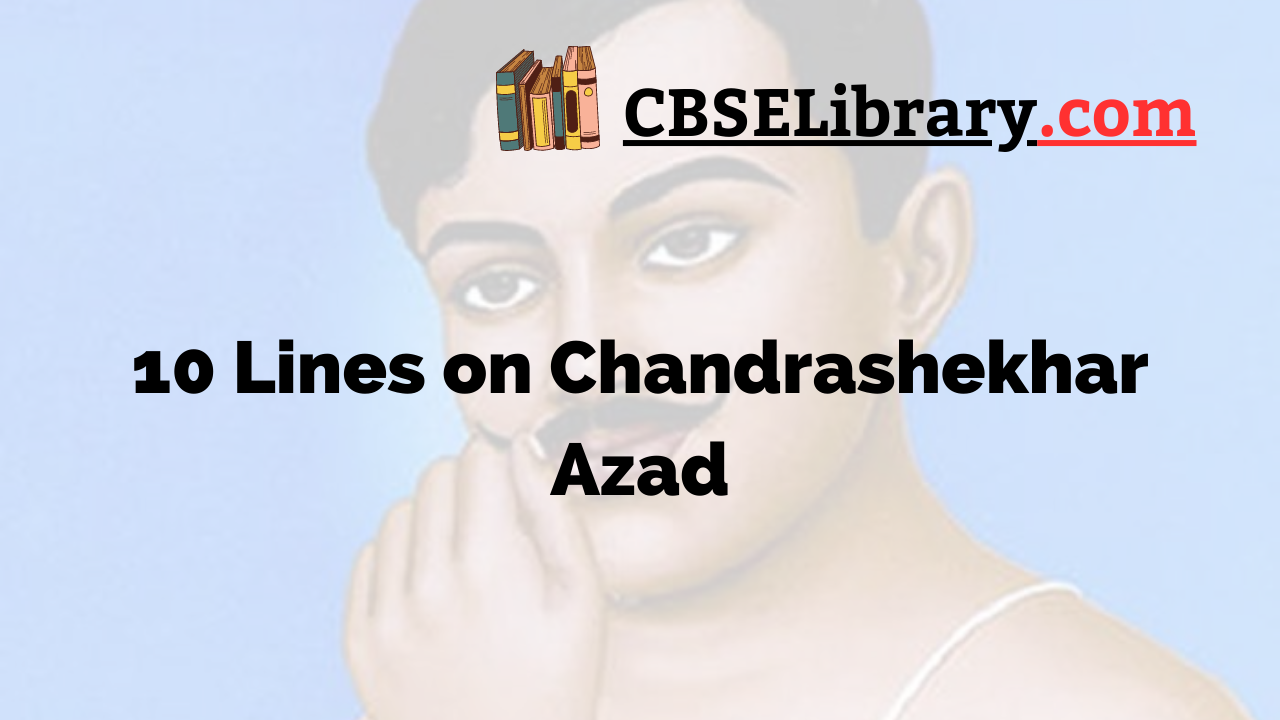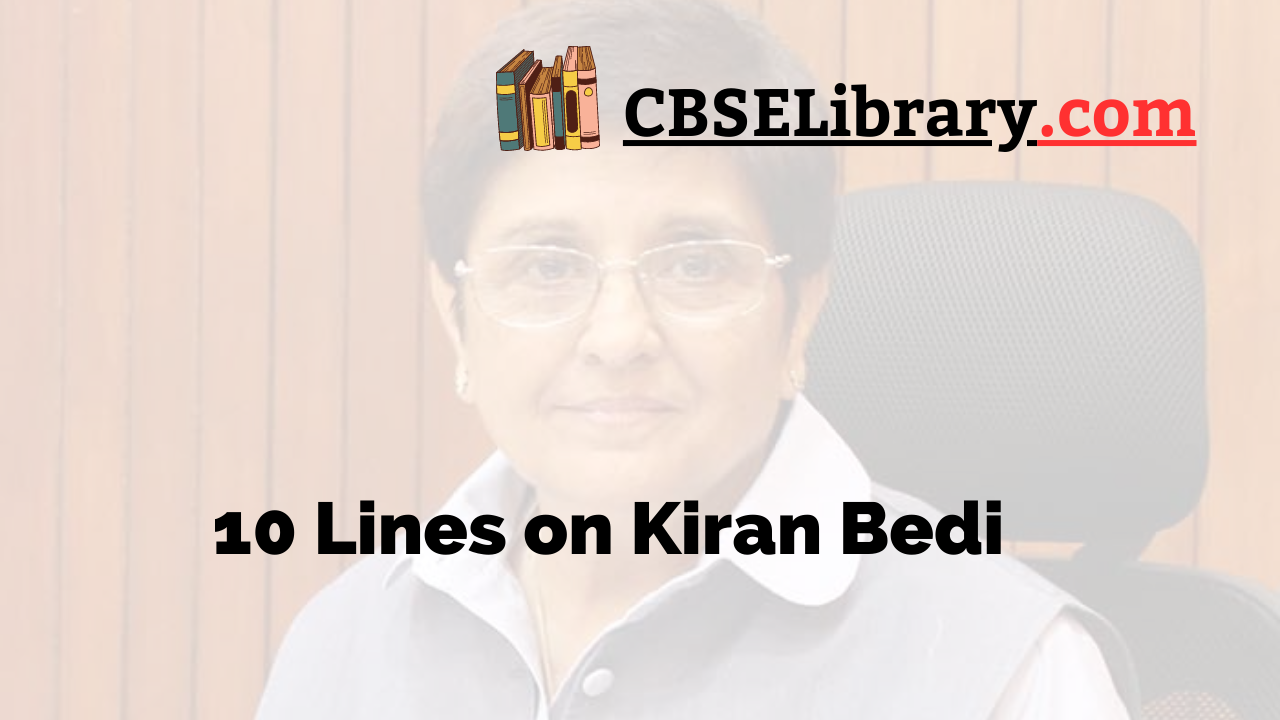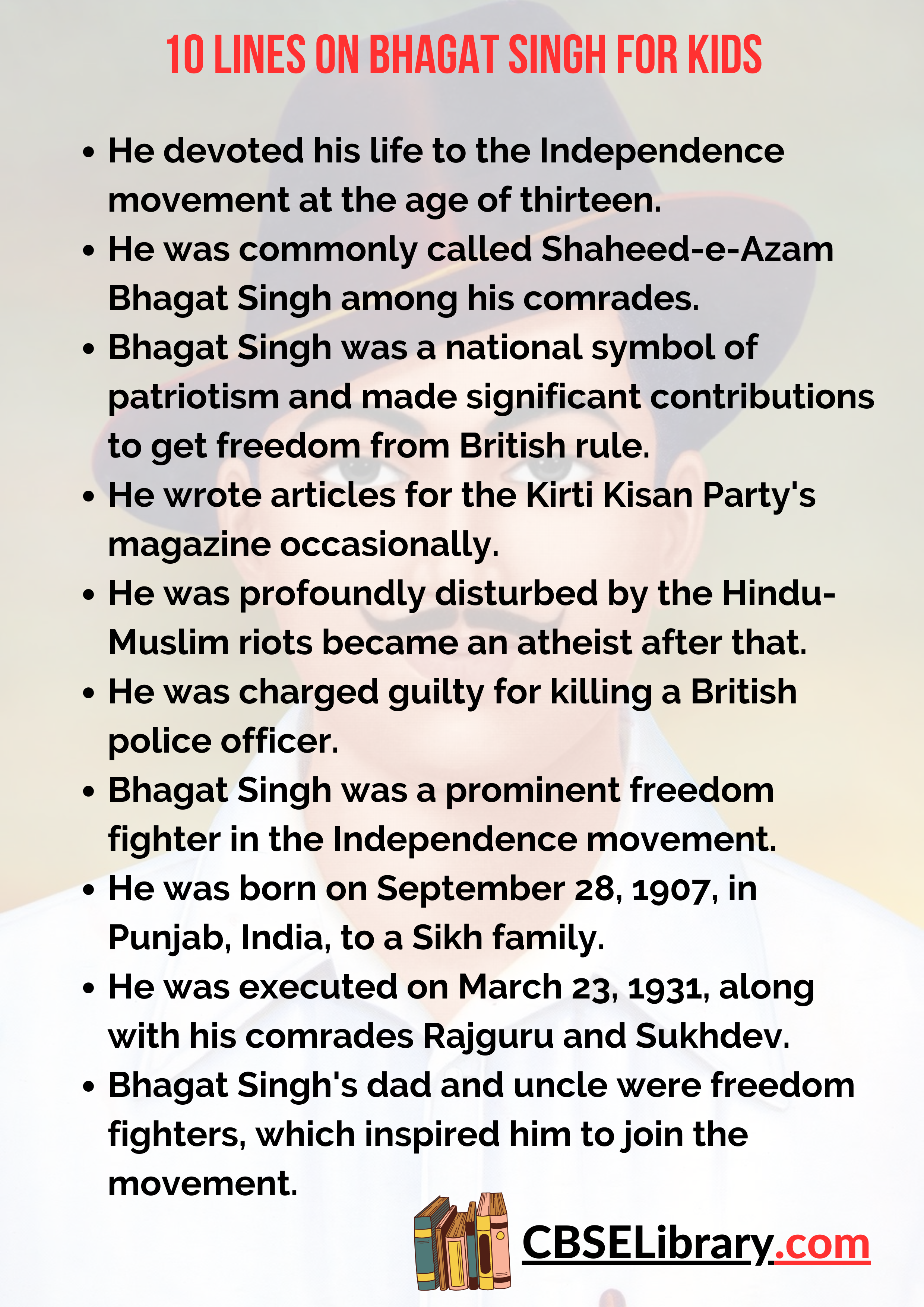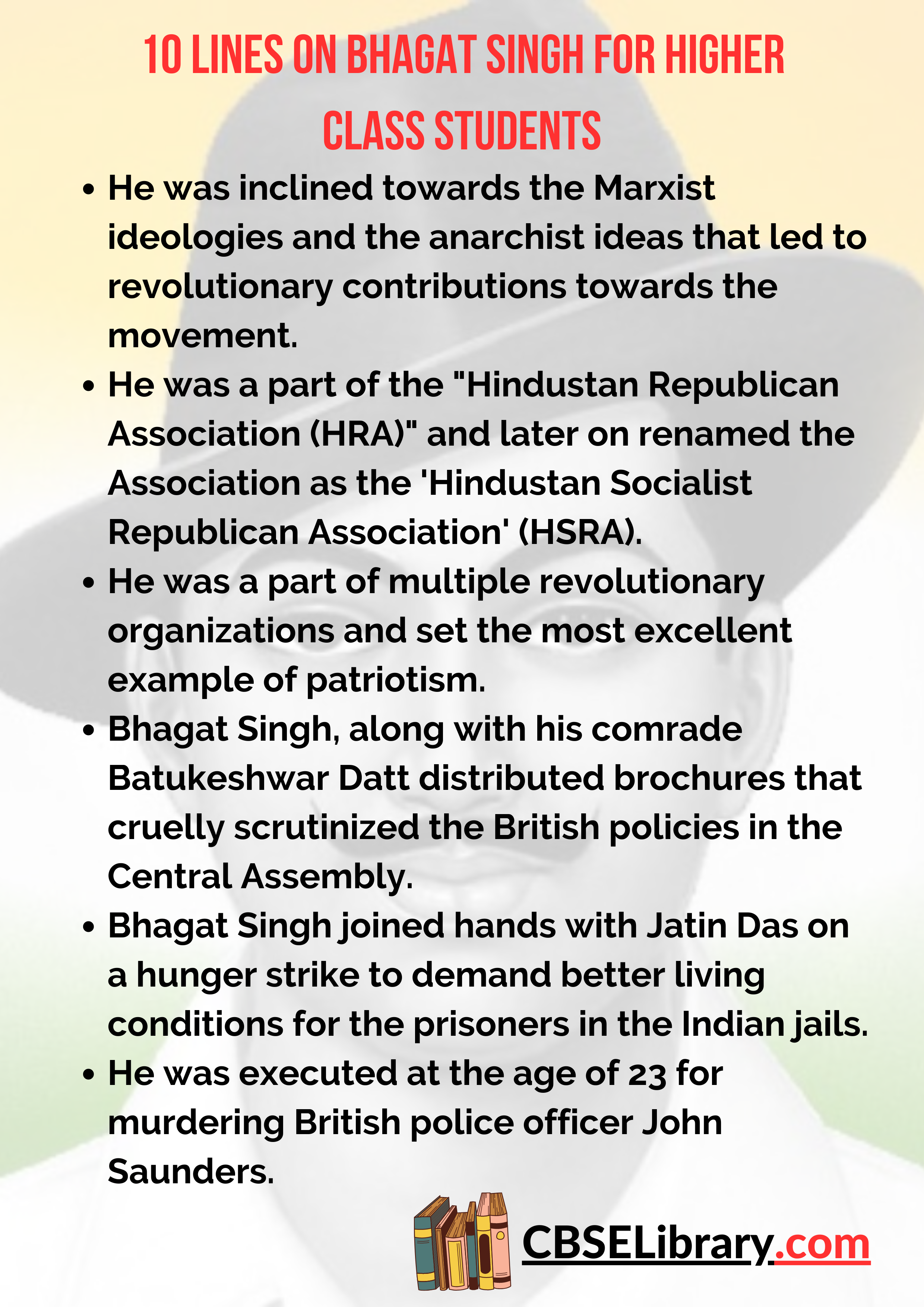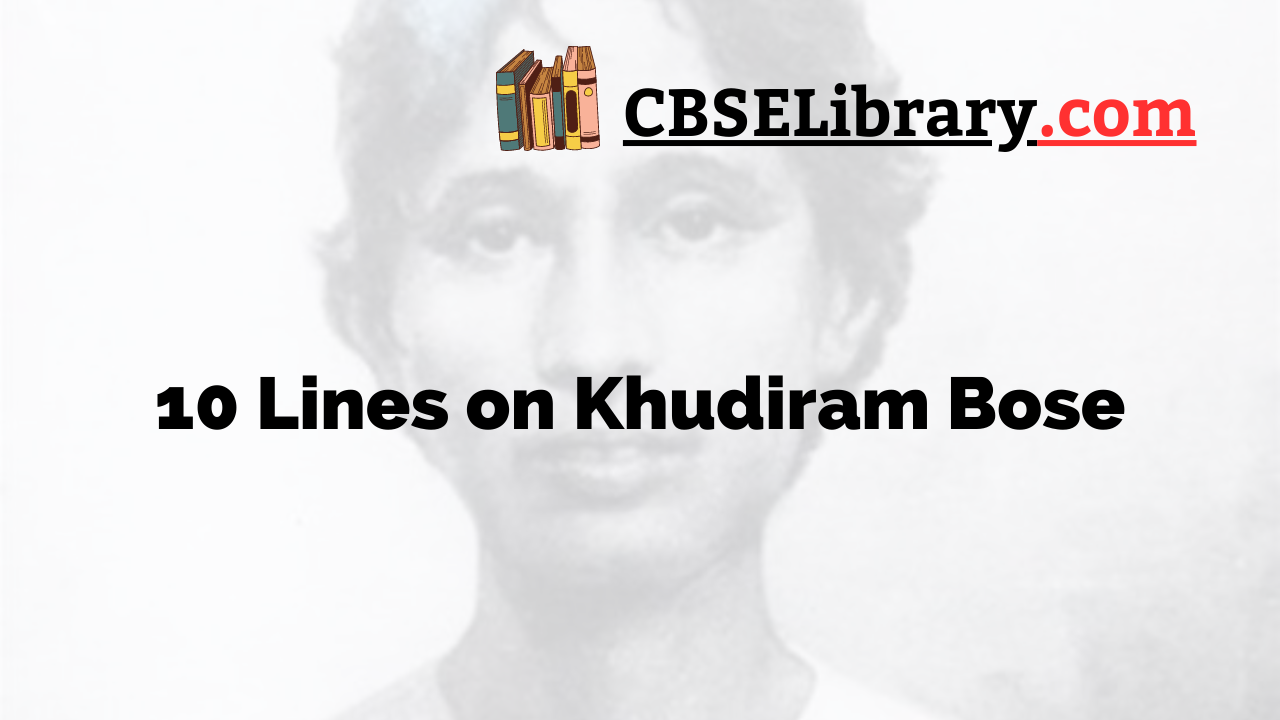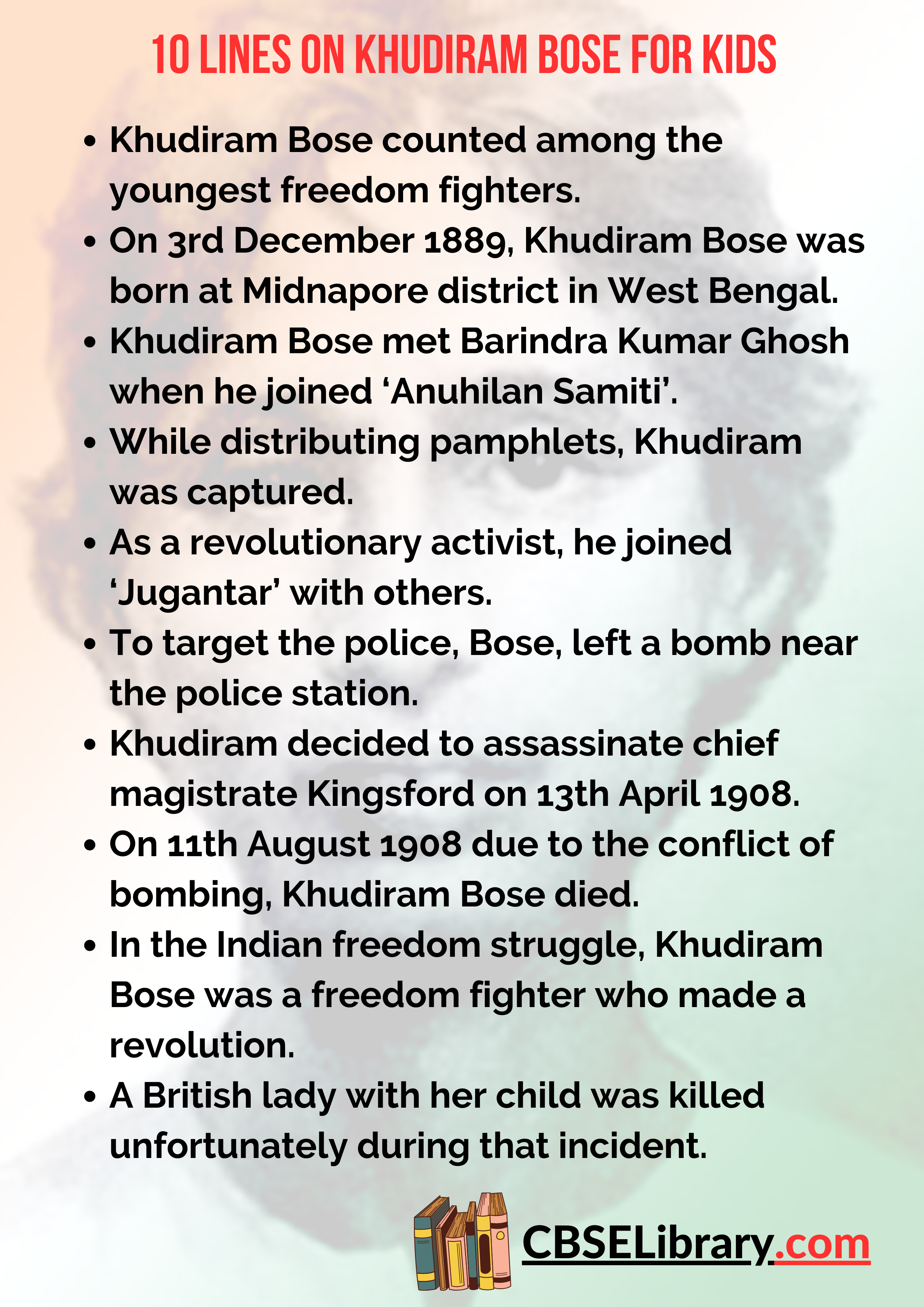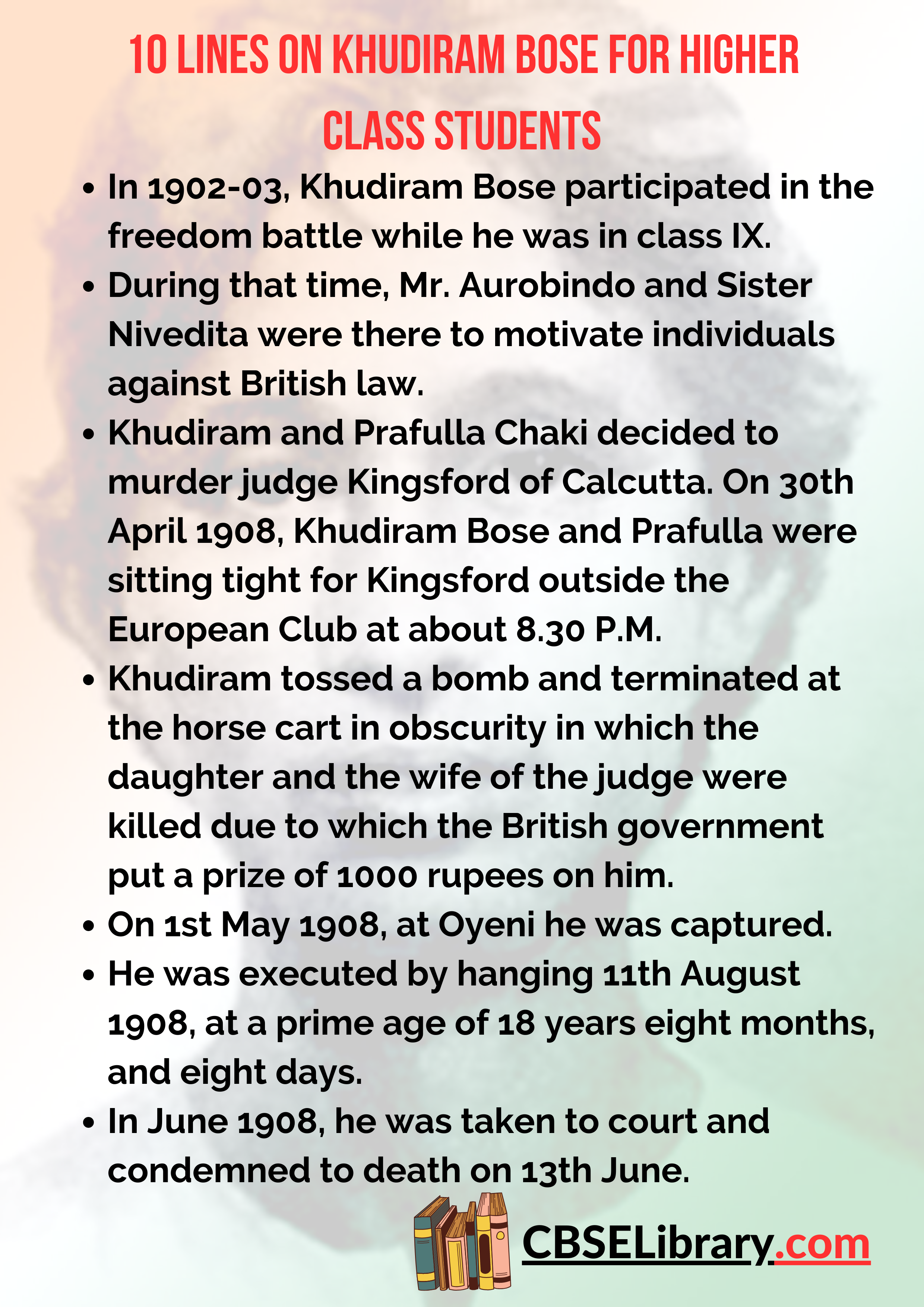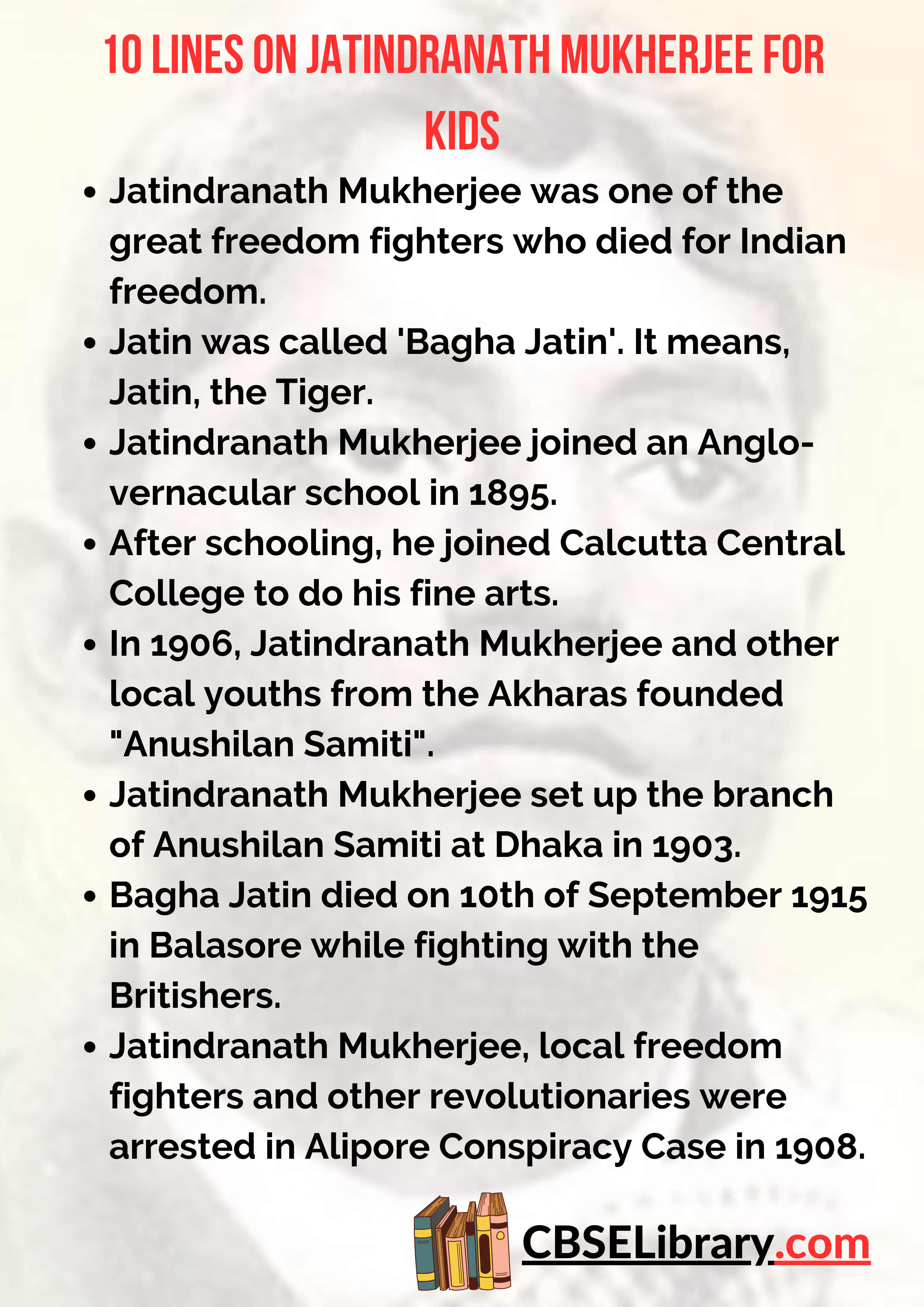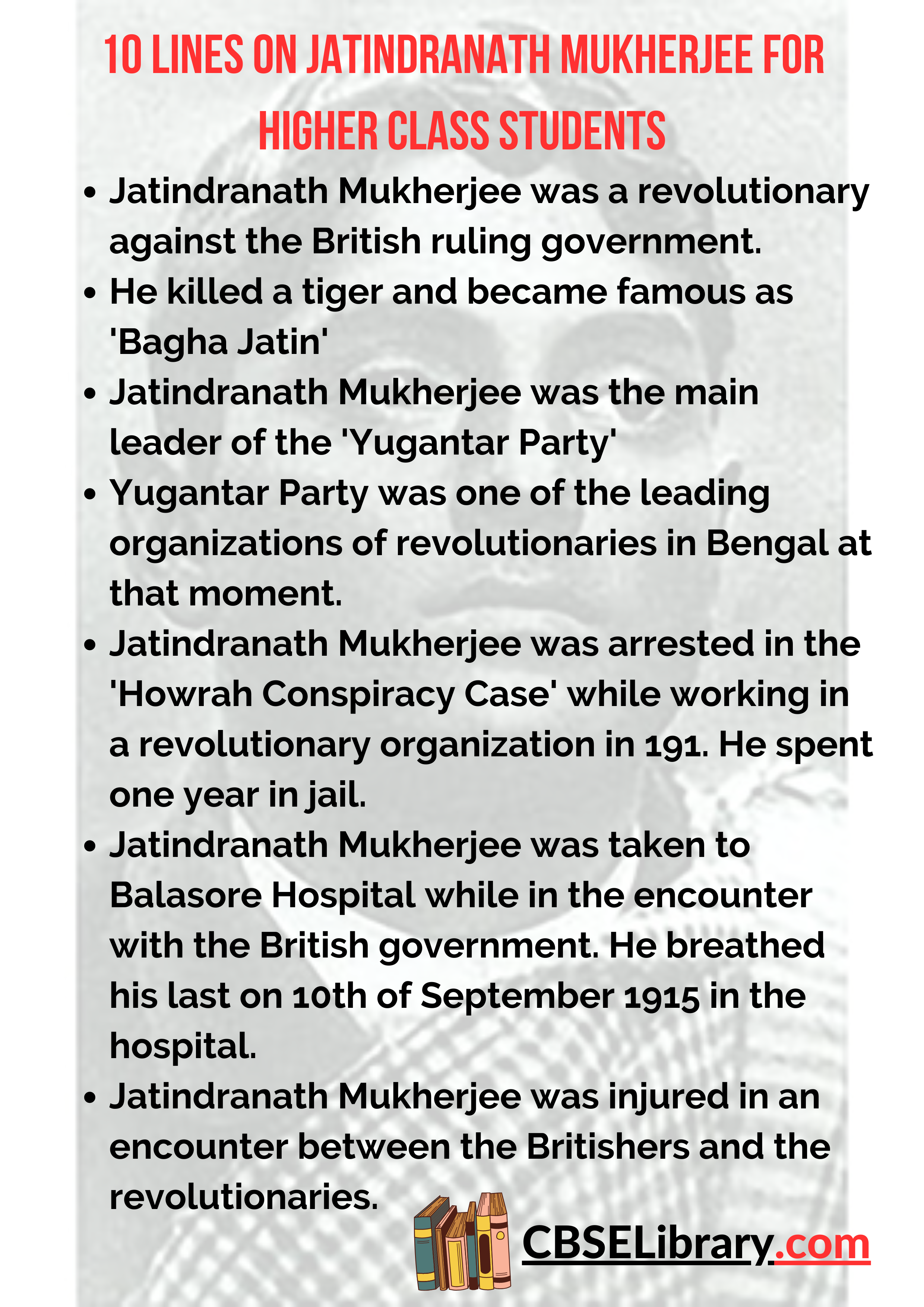10 Lines on Chandrashekhar Azad: Chandrashekhar Azad is a name that resonates in each and every household in India as a revolutionary freedom fighter who stood up against the British atrocities. Chandrashekhar Azad is actually a self-taken name that coincides with the freedom movement of India from the British. He was a patriot and Hindu nationalist who laid down his life for the independence of India.
Without the contributions of the likes of Chandrashekhar Azad, Bhagat Singh Shivaram Rajguru or Sukhdev to the Independence moment, it would be difficult to imagine an independent India from British.
You can read more 10 Lines about articles, events, people, sports, technology many more.
Set 1 – 10 Lines on Chandrashekhar Azad for Kids
Set 1 is helpful for students of Classes 1, 2, 3, 4 and 5.
- Chandrashekhar Azad is a popular freedom fighter who fought for Indian Independence movement
- Chandrashekhar Azad was born on 23rd of July 1986
- Shekhar Azad was born in a small town, Barbara village in the present-day state of Madhya Pradesh in India
- He was a Sanskrit scholar and when to study further in Banaras
- Azad is known as an aggressive nationalism who resorted to violent extremism
- He was an active member of the Hindu Republican Association
- He funded his freedom moment through robberies and loot of British government property
- Chandrashekhar Azad was close to Bhagat Singh and both of them ran The Hindu Republican Association together
- Both of them believed in socialist principles for India
- Chandrashekhar Azad died on 27th February 1931.
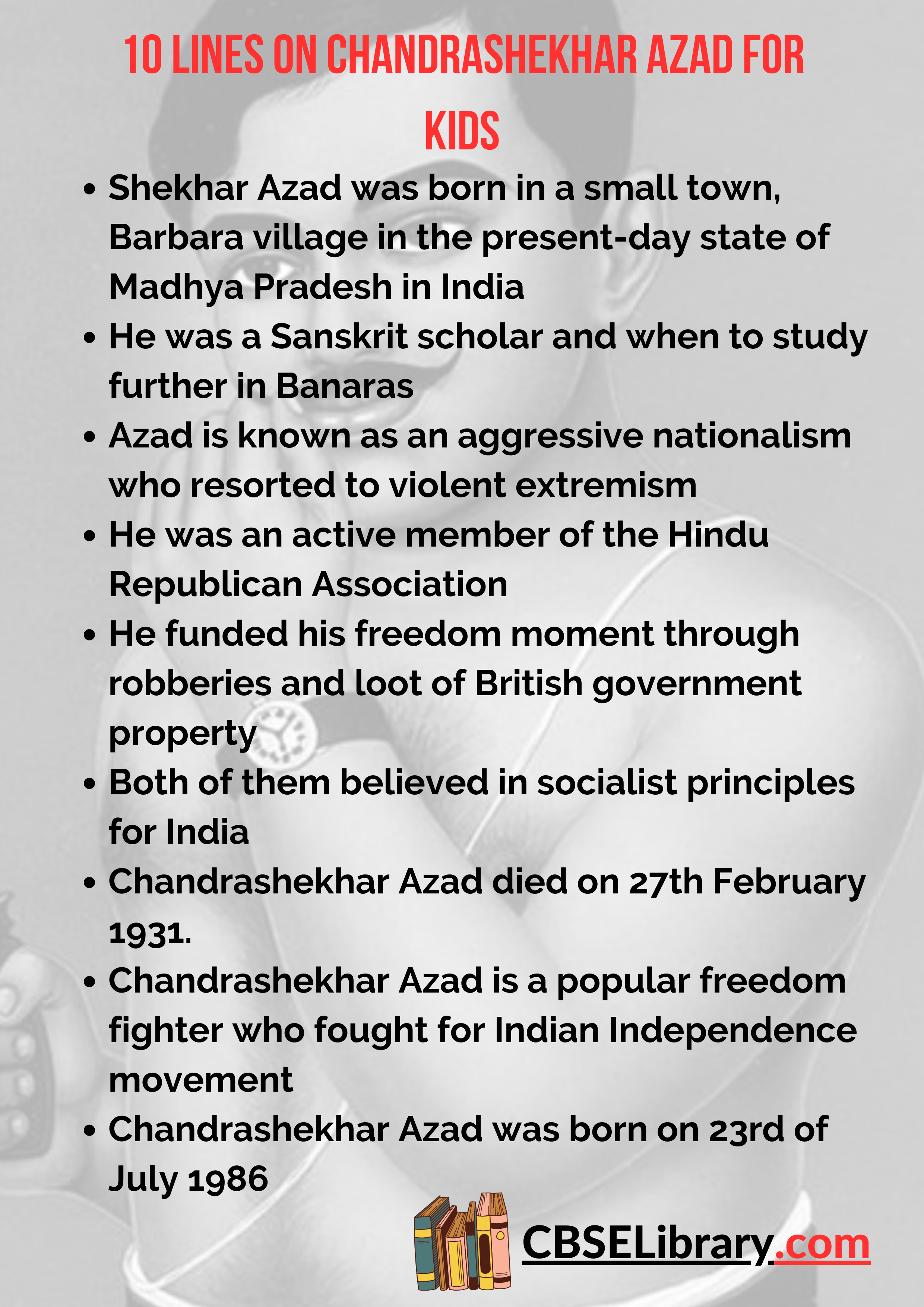
Set 2 – 10 Lines on Chandrashekhar Azad for School Students
Set 2 is helpful for students of Classes 6, 7 and 8.
- Chandrashekhar Azad was one of the greatest freedom fighters India has ever seen
- He was the face of an aggressive nationalist moment that gave birth to a different line of Independence moment
- Unlike the Gandhian principles of nonviolence, Chandrashekhar Azad believes in violent protests to weed out the British
- Chandrashekhar Azad is one of the most important mentors of Bhagat Singh
- The original name of Chandra Shekhar Azad is Chandra Shekhar Tiwari
- He was involved in many violent acts such as Kakori train robbery, assembly bombings, shooting of Saunders at Lahore and the movement to avenge the killing of Lala Lajpat Rai
- Chandrashekhar Azad was the backbone of Hindu Republican Association later which was named as Hindustan Socialist Republican Association
- The political ideology of Chandra Shekhar Azad was liberalism, anarchism and socialism
- He killed British Superintendent of Police John Saunders to avenge Lala Lajpat Rai’s death
- Chandrashekhar Azad died on 27th February 1931 when he was surrounded by the British police.
Set 3 – 10 Lines on Chandrashekhar Azad for Higher Class Students
Set 3 is helpful for students of Classes 9, 10, 11, 12 and Competitive Exams.
- Chandrashekhar Azad is a freedom fighter unlike Mahatma Gandhi or Pandit Nehru
- He believed that extremism and violent nature of protests was the only way to throw out the British from India. After the Jallianwala Bagh massacre in 1991, Azad took upon himself to take violent extreme measures to fight British and started gathering arms and ammunitions to achieve his goal.
- Several patriotic films are made on the life of Chandrashekhar Azad in Bollywood
- He considered himself as a revolutionist and socialist with anarchist as his political ideology
- Without Chandrashekhar Azad, the British should have never taken the Independence moment of India seriously
- Although Azad lived only for 25 years, his contribution to the Indian Independence movement was immense
- He inspired thousands of Indians to take part in the freedom struggle of India
- Chandrashekhar Azad was a great scholar of Sanskrit and he studied in Kashi Vidyapeeth in Varanasi
- One of the greatest quotes of Chandrashekhar Azad is “if your blood does not reach then it is water that flows in your veins, for what is the flesh of youth if it is not of service to the motherland”
- He joined the Indian Independence movement as a student when Mahatma Gandhi launched the non-cooperation movement in the year 1921. When Chandrashekhar Azad was surrounded by police, he shot himself and pledged that he would never be captured alive.

FAQ’s on 10 Lines on Chandrashekhar Azad
Question 1.
What did Chandrashekhar Azad do for the Indian Independence movement?
Answer:
Chandrashekhar Azad organised The Hindu Socialist Republican Association (HSRA) and inspired millions of Indians to fight against the British
Question 2.
How did Chandrashekhar Azad die?
Answer:
Chandrashekhar Azad died when he was surrounded by the British police officers and he shot himself with his gun
Question 3.
What does Chandrashekhar Azad represent today’s youth?
Answer:
Self-sacrifice, courage and valour are some of the values that Chandrashekhar Azad represents to today’s Indians
Question 4.
What was Chandrashekhar Azad’s political ideology?
Answer:
Socialism and revolutionism are the two most important political ideologies that Chandrashekhar Azad believed in
